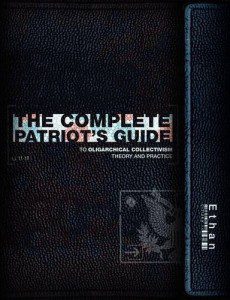Contributing writer for Wake Up World
Despite the limitations and constraints of our educational systems, there are some excellent teachers. And there are some not so excellent instructors. We learn a lot in school, but it is also important to learn outside of school as well. Some of the most valuable lessons are not found in the teacher’s answer book, and yet some teachers operate by the book, at right angles, making no adjustments for the humanity of their students.
Not surprising given that the school system itself is geared toward creating two things: employment and expectation.
Like most people who are interested in history, I dreaded math and algebra, and may actually have found my interest in history out of my disdain and fear of division and multiplication. What I didn’t realize then was how much addition and subtraction is actually involved in writing our political and historical narrative.
[pro_ad_display_adzone id=”110028″]
I remember the first time I learned how to add. I thought I had tackled the math thing then and there. I also remember the first time I was frozen in front of the class, unable to do long division on the chalkboard. And yet the mathematical lesson I have used the most since its revelation to me, and the one I remember most distinctly, turned out to be more than just a mathematical lesson.
A Tangible Math Lesson
An elder grew up in a country where government lies and propaganda were commonplace.
One day, when I was a child, he was grilling a friend and I on our multiplication tables. After a while he paused and said,
“Let me think of a hard one — alright, what is eight times seven?”
My friend and I deliberated and answered “fifty-six”.
“Wrong. Think again.”
Well we checked and double checked our arithmetic.
“Fifty-six.”
“No.”
“It’s fifty-six, I think.”
“You’re wrong, it’s fifty-eight.”
“I think it’s fifty-six.”
“Wrong it’s fifty-eight.”
We held our guns, but because he was the authority figure, finally capitulated to his insistence that he held the correct answer.
“Ok fifty-eight.”
After we gave in, he explained the lesson.
Never submit to the half-truths, distortions and lies of authorities, particularly when you already know the answer.
*(Today one would have to remove all electronic devices with a calculator to teach this lesson.)
Idiots and Elitists
The reality is, authorities are bound to distribute lies and half-truths in support of their own ends and agenda.
This lesson is huge part of George Orwell’s novels 1984 and Animal Farm. The removal and replacement of whole segments of language by those in control is a key part of the dystopian backdrop of 1984. Over time, the state-approved dictionary shrinks, while events are changed or removed altogether from “history”. In Animal Farm, the agreed social rules of the farm, posted in public for all to see, are progressively altered in both word and in spirit by an emerging power faction, who argue linguistic technicality while insisting that everything is unchanged and enforcing the altered “rules” to their own ends.
Published in 1945 and 1949, these works by Orwell were an eerily accurate exploration of the inherent potential for corruption in our heavily institutionalized society. Today, the real world is full of similar such occurrences. Elitists often censor, suppress and obscure the truth, while information is removed, falsely discredited, even replaced or entirely conjured. Meanwhile, euphemisms are inserted into the wider vocabulary to steer not only people’s perceptions and decision making, but the very subjects they will reasonably consider.
“Idiots refuse information, zealots refute information, elitists misuse information and patriots seek and distribute information. These archetypes are true of patriarchal societies around the world…” — from The Matrix of Four
In accordance with the Matrix of Four, there are four types of lie, all of them involving some nugget of truth. For the sake of this discussion, let’s look to the nuclear experimentation industry for examples.
- The first type of lie is the addition of information. Sometimes the addition of a small bit of information can change the story entirely. For example: Yes the ailing Fukushima reactor is still spewing radioactive pollution… but did you know that, according to nuclear industry advocates, low level exposure to nuclear radiation is actually good for you?
- The second type of lie is the subtraction of information. The removal of small key components can result in entirely different meaning. For example: With the nuclear site in Miami operating dangerously above standard ‘safety’ limits, the regulator increased the limit, averting an “emergency” by subtraction.
- The third type of lie is multiplication of information. Exaggerations of situations connected with the story as well as exaggerations of extraneous information are included in the presentation to dilute it *(known as argumentum ad absurdum, which is Latin for “argument to absurdity”.)
- The fourth type of lie is division of information. The facts are interlaced with disconnects and the significance of information is separated or underplayed. To exemplify the third and fourth types: Nuclear industry advocates claim nuclear energy to be ‘clean’ and ‘safe’. To support this belief (not fact), they exaggerate the relevance of nuclear’s low carbon emissions in comparison to other energy systems while ignoring or downplaying the permanent environmental destruction nuclear waste causes and undermining the science that clearly proves radiation exposure = cancer and death.
The problem for the ‘powers that were’ is, we each have a mind that can compute math tricks as well as self-serving political gimmicks — both of which are constants in today’s institutional operations.
Sure, this mixed up mathematics, irregular logic, circular reasoning and ill rhetoric is sometimes just due to a lack of information, combined with an unreasonable unwillingness to admit one doesn’t know everything. But given how extensive and common such twisted representations are in modern politics, one can only assume that, more often than not, we are witnessing a web of implicit agendas running counter to the assumed program of community governance. And we all know it.
So what is still sustaining a system we know is failing? Fear and hate.
Fear, Hate and Truth
Hate is the ultimate control mechanism. It prevents us from seeing the brotherhood in humanity. It enables institutions to promote (very profitable) war and killing. It creates closed-mindedness and closes the heart to spiritual healing. It is endemic to a war mentality, where both sides rationalize violent acts in the name of peace, liberty and freedom, all the while hating the evil “others” who are invariably demonized or dehumanized by the intentional rhetoric of war.
Fear is toxic and debilitating, and worst of all, much like ignorance — it is contagious. It’s no secret, most people don’t like change — particularly large scale change. Fear is, by definition, an emotional response to the unknown, to a change that has not yet happened or something that does not yet exist. And today, our institutions are designed to combat change of all kinds; we’re equipped for war, not peace. We’re busy “fighting climate change” instead of building truly sustainable systems. We have built entire institutions around such fears, constantly bracing against a perceived and mysterious threat to our future peace and security, but with no real progress ever being made.
Ironically, it is by institutionalizing war and this culture of fear that we embed conflict, lack and separation into our collective consciousness. And from this point, acts of militarism and invasion become normalized in our minds.
[For a deeper look at the institutionalization of war, check out my article Mutually Agreed Peace: Ending The U.S. Doctrine of Perpetual War.]
The intentional seeding of fear and ignorance into our social psyche holds us back as a collective, limiting our knowledge of our actual (not perceived) world, our expectations and ultimately, how we manifest our future reality. Initiating a ‘flight or fight’ response, at a primal level, our self-protective impulses can propel us to take aggressive (re)actions, which in turn seed more hate and fear in those around us. And when that fear relates to the question of social programming or collusion, the deep sense of trust and security that is embedded in our relationship with “society” and “the system” causes many to close their minds, fearful of even questioning such fundamental beliefs, and hateful toward those who do.
Truth, the antithesis of evil, exists without fear — of outsiders, of alternative perspectives, of other lifestyles and cultures, of what may be seen heard or spoken, of what may come next, of losing control, of truth itself.
In our ongoing search for truth, we invariably encounter both ignorance and pro-institutional propaganda. So, when encountering those who espouse the relative merits of our corrupted, failing structures (while often also mocking “alternative” views), it can very be difficult to understand which people are in fact idiots and which are entangled with elitist philosophies and institutions. Do they ignore the facts because of fear, imparted ignorance and mental numbness? Or do they perpetuate ignorance intentionally, in order to disempower — a common tactic in executing covert agendas.
The best mathematical lesson I ever learned taught me to question the deductions and answers of “authority” of all kinds. Where authority exists, so too does an imbalance of power, and from a point of imbalance, the truth is easily corrupted — by addition, subtraction, multiplication and division.
When you encounter un-truths, you may wonder — are they idiots, zealots or elitists? Don’t waste your energy. Your best weapon is always truth. True patriots question and share information openly, free of fear and agenda. Be a patriot.
[For more on this, check out my article Idiots, Zealots, Elitists and Patriots: The Four “Wise Monkeys” of Modern Society.]
The Complete Patriot’s Guide
Ethan Indigo Smith’s book The Complete Patriot’s Guide is an insightful exploration of history, philosophy and contemporary politics of today’s heavily institutionalized society.
An inspiration for positive, peaceful individual action, The Complete Patriot’s Guide is pro-individual in its perspective and, although political, discusses our society and its institutions from neither left-wing nor right-wing perspectives, exploring metaphors and symbolism relative to the fictional work of George Orwell through real history, philosophy and contemporary politics. Layered with insight, it is in part a literary exploration of the themes raised in Orwell’s 1984, and provides theories for individual and collective empowerment.
The Complete Patriot’s Guide is available on Amazon.
Recommended articles by Ethan Indigo Smith:
- Tibetan Rites of Rejuvenation: a Guide to Meditation and Breath
- Understanding Ascension: The Geometry of Energy
- 11:11 – A Call to the Indigos
- The Seed of Buddha Meditation
- The Mandala: The Sacred Geometry of Meditation
- The Common Origins of Religions and Theology
- Aum Mani Padme Hum: The Integration of Duality and Polarity
- Guardians of the Earth Unite! American Indian Prophecy, The Medicine Wheel, and The Four Sacred Directions
- The Spiritual Golden Rule
- Meditation Comprehension for the Youth
- Meditation 108: A Guide to Meditating for the Infant Practitioner
- Presence and Mindfulness: the Meditative Value of 108
About Ethan Indigo Smith:
Activist, author and Tai Chi teacher Ethan Indigo Smith was born on a farm in Maine and lived in Manhattan for a number of years before migrating west to Mendocino, California. Guided by a keen sense of integrity and humanity, Ethan’s work is both deeply connected and extremely insightful, blending philosophy, politics, activism, spirituality, meditation and a unique sense of humour.
The events of September 11, 2001 inspired him to write his first book, The Complete Patriot’s Guide to Oligarchical Collectivism, an insightful exploration of history, philosophy and contemporary politics. His more recent books include:
- Tibetan Fusion a book of simple meditative practices and movements that can help you access and balance your energy
- The Little Green Book of Revolution an inspirational book based on ideas of peaceful revolution, historical activism and caring for the Earth like Native Americans
- The Matrix of Four, The Philosophy of the Duality of Polarity on the subject of the development of individual consciousness
- 108 Steps to Be in The Zone a set of 108 meditative practices and steps toward self discovery and individual betterment, including techniques to develop balance, transmute sexual energy and better the self
- The Terra-ist Letters, a controversial work that humorously contrasts the very serious issues of global nuclear experimentation promotion and global marijuana prohibition
For more information, visit Ethan on Facebook and check out Ethan’s author page on Amazon.
[pro_ad_display_adzone id=”110027″]









